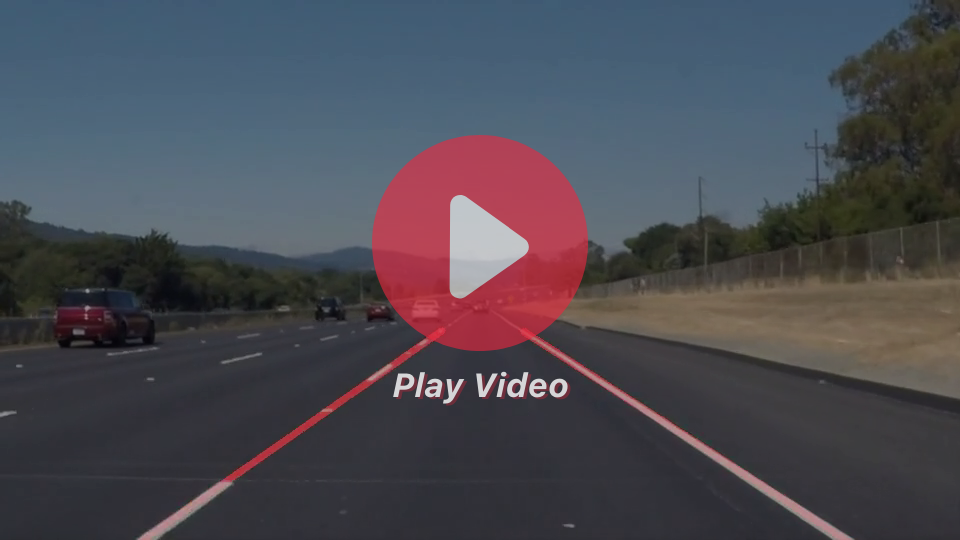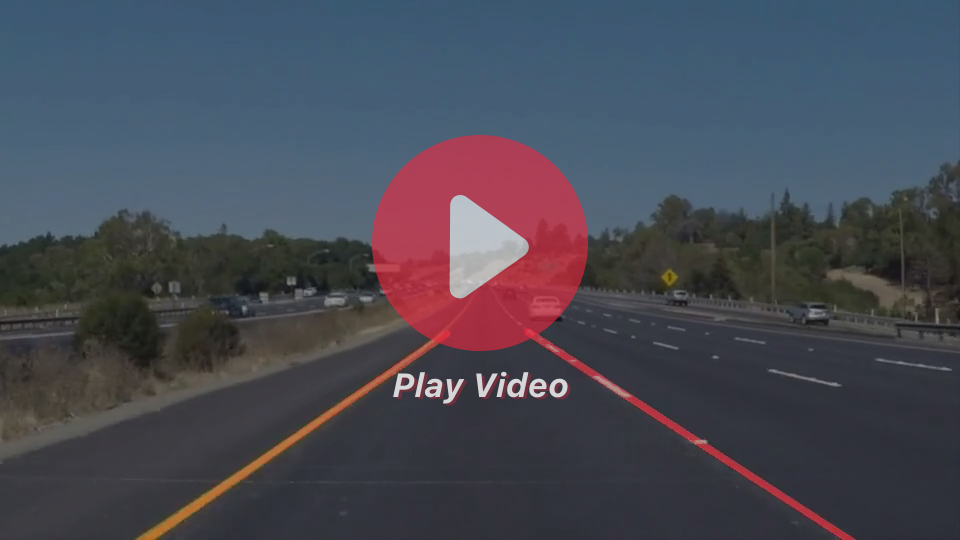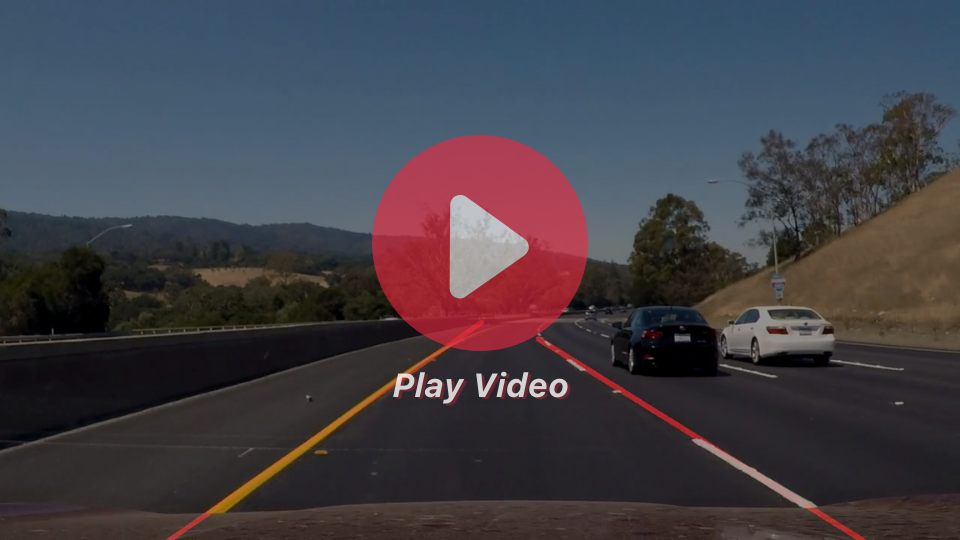Basic Lane Line Detection
Python, OpenCV
OpenCV library functions such as canny edge detection and Hough lines transformation are utilized in this program to detect lane lines. In addition, we can remove extraneous information from the image by using the region of interest.
Pipeline
My pipeline included five steps. Here are the specifics:
- Image conversion from three color areas to grayscale
- Using Gaussian Blur with a kernel size of 5.
- Using a 1:3 threshold ratio for canny edge detection
- Defining vertices for masking the region of interest
- Using the Hough line transformation inside the region of interest
After connecting all of the pipelines, I was able to detect the lane lines inside the region of interest. The purpose of this project, however, is to draw a single line on the left and right lanes.
I designed the draw lines() function to extrapolate the lines in order to draw a single line on the left and right lanes. I divided the lanes into left and right based on their slopes. Then I divided them into two groups for which the linear regression equation will be constructed by running np.polyfit ()
The graphic below depicts the distribution of slopes in a single image. The right lane will have a positive slope beginning at 0.5, while the left lane will have a negative slope beginning at -0.5. As a result, any values in the middle will be ignored.

After draw lines() returns the desired output, I rerun the pipelines on the input image, and the outcome is shown below.
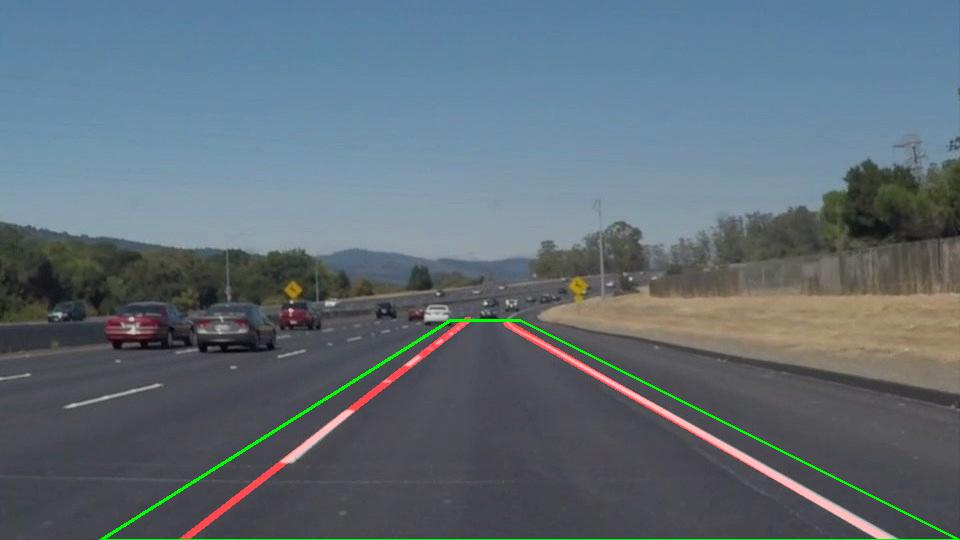
If I combine all of the input photographs, it will appear like this.
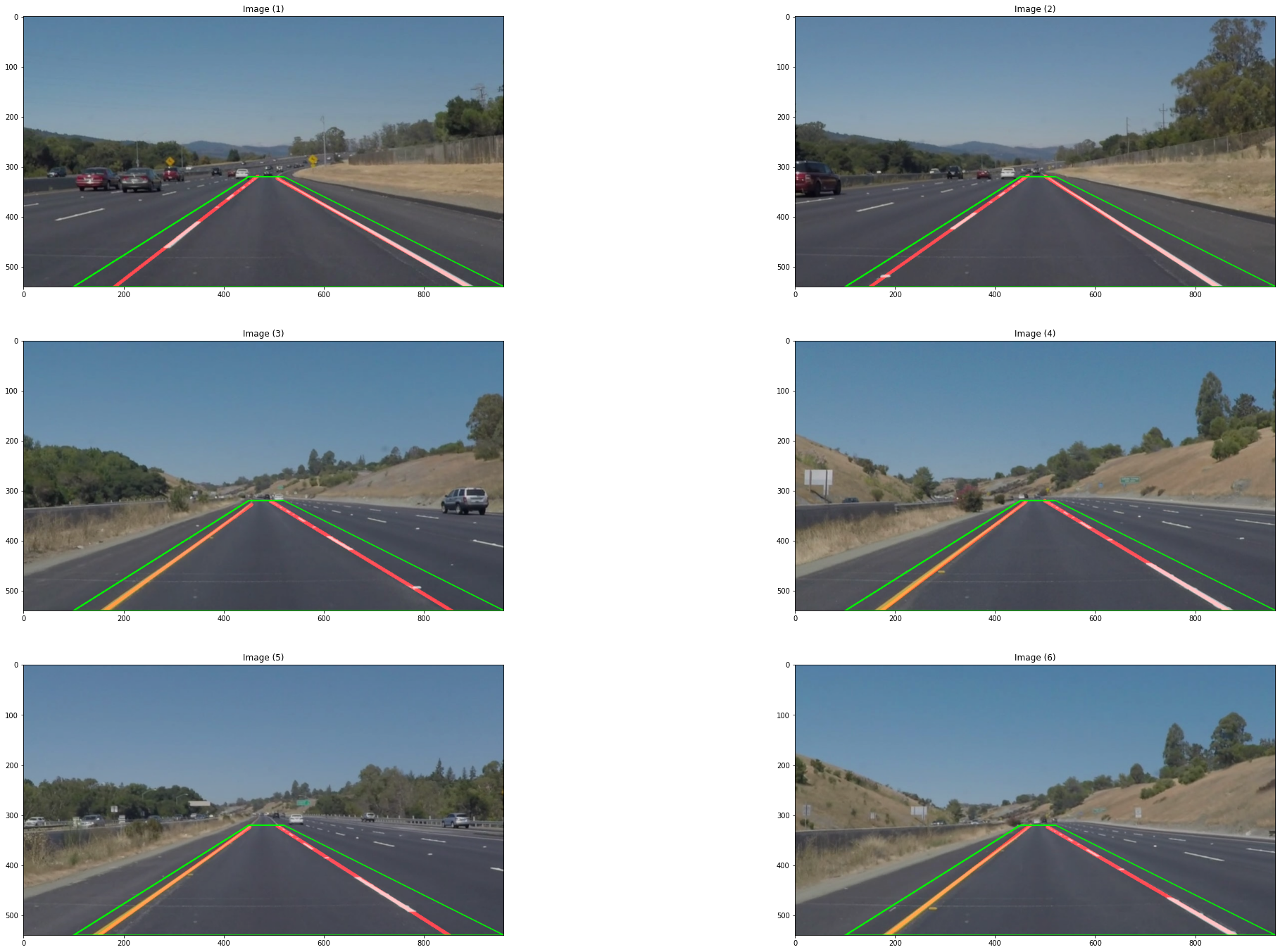
After applying the pipelines to the video input, I was able to achieve satisfactory results on the video with white color line detection and the video with yellow and white color lines.
Potential Shortcomings with the Current Pipeline
Because my extrapolated formula uses a linear regression, it could have a flaw if the lane was not straight.
An additional drawback could be negated if the slope range is from -0.5 to +0.5. Because the slope values in each video clip can vary, using a hardcoded cutoff doesn’t seem like the ideal solution.
Adding to the problem, if the video includes a color change on the road or a shadow obscuring the lines, the algorithm will be thrown off. This is demonstrated in the video below.
Possible Improvements to the Current Pipeline
Using a curve fitting lane instead of linear regression would be an improvement. An alternative to employing a hardcoded slope range threshold would be to use a filtering technique to remove some noise from within the region of interest. Color space research may be necessary to improve the algorithm’s resilience in dealing with the road color changing problem.
